 |
| email-markeitng |
There are numerous email marketing tool options to choose from with different features, payment plans, and the level of user-friendliness.
Therefore, you want to choose an excellent email marketing software has all the important features including sending out email newsletters.
Some of the essentials you should be looking at are adding email contacts in bulk, email automation features (auto-responding), SMS sending, detailed reporting, high deliverability rates, customer segmentation options for targeted emails, and campaign management tools.
What about the pricing?
Most email marketing services allow you to store subscribers and send emails for free up to a point. After that, the standard pricing model is the price per subscriber. Usually, the pricing goes higher as the number of subscribers grow.
9 Best Email Marketing Services in 2021
Note from the editor: Most (if not all) providers in this list offer either free plan, free-trial or money back guarantee.
1. Constant Contact
The user experience is quite simple and there are some great drag-and-drop tools and wide range of design themes.
You have multiple options for importing your email contacts. You can use copy-pasting, upload emails in bulk from a file, and import contacts from Gmail, Outlook, and other 3rd party apps. The whole process itself is quite simple and easy to follow.
Constant Contact’s email design tool uses a drag and drop functionality together with element blocks. When creating your email, you can choose from several templates as a base for your email, or start building it from scratch. Multiple handy toolbars help you with adding elements or editing a selected one. However, when adding an image, you go through three separate windows, which we feel is a bit much.
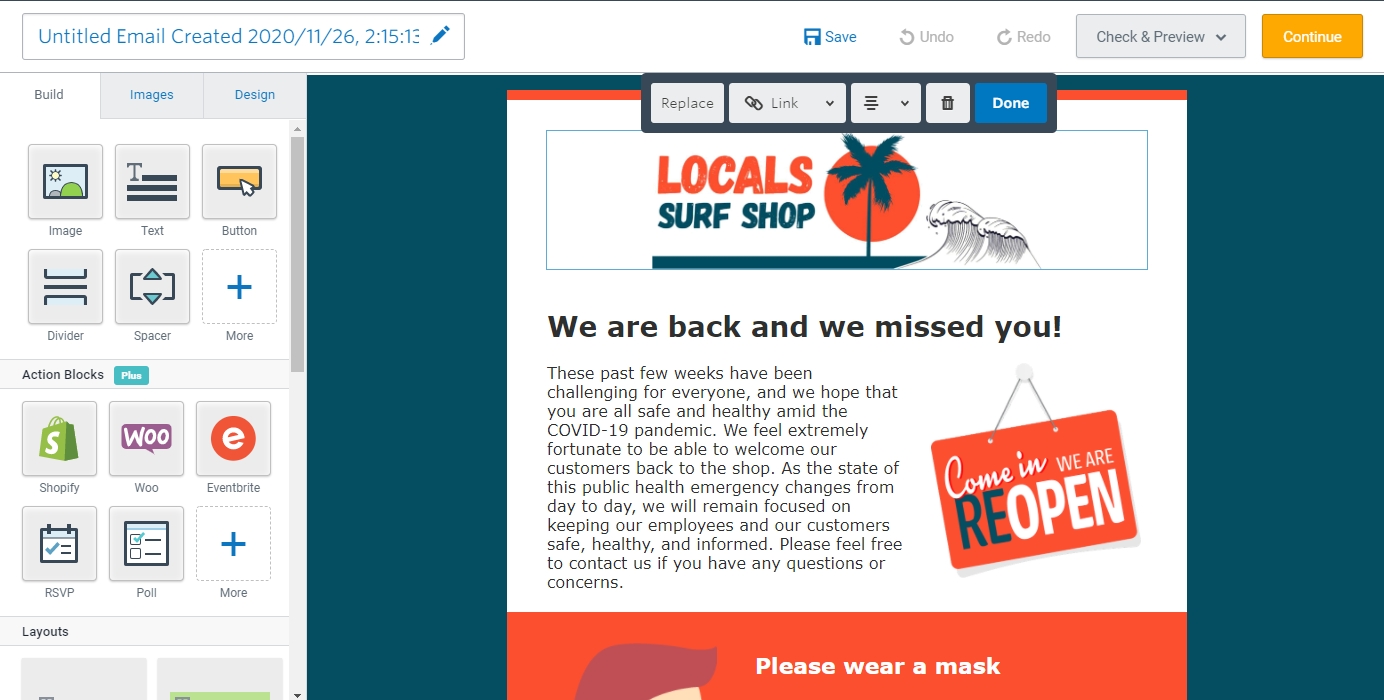
While you’re building your email, you can always use the preview function to see how the current version would look in someone’s inbox.
After you’ve created your email, you choose the email recipients, add a subject line, and determine when your email is sent. Once you’re done with that, you can go back to your dashboard and see some basic statistics about your emails’ performance.
Mobile Editor
Constant Contact has a separate mobile app available on the App Store and Google Play. You can use it to create and send emails, receive notifications, and see statistics of your sent emails. The app itself is relatively compact and useful for marketers on the go who still want to be productive with their email marketing.
Features
Constant Contact’s service has all the modern features necessary to create an effective email marketing campaign in today’s world. Some of the more advanced features are only available with the higher-tier plan. So, make sure you pick the right plan with your desired features.
On top of the unlimited emails you can send with Constant Contact, the main features are drag and drop design tools, mobile-responsive emails, list segmentation for targeted emails, personalized emails, and email automation capabilities.
Their customer support is available over the phone and live chat support, and they have an extensive knowledge base with additional marketing articles you can browse.
If you don’t have a website yet, then Constant Contact’s plans also include web hosting. You can build an entire website, landing pages, or even eCommerce sites. Check out our website builders review where you can find further information about Constant Contact Builder as well, among other best website builder providers.
Pricing & Plans
Constant Contact offers two subscription plans, and the cost of both is tied with how many contacts you are adding to your account.
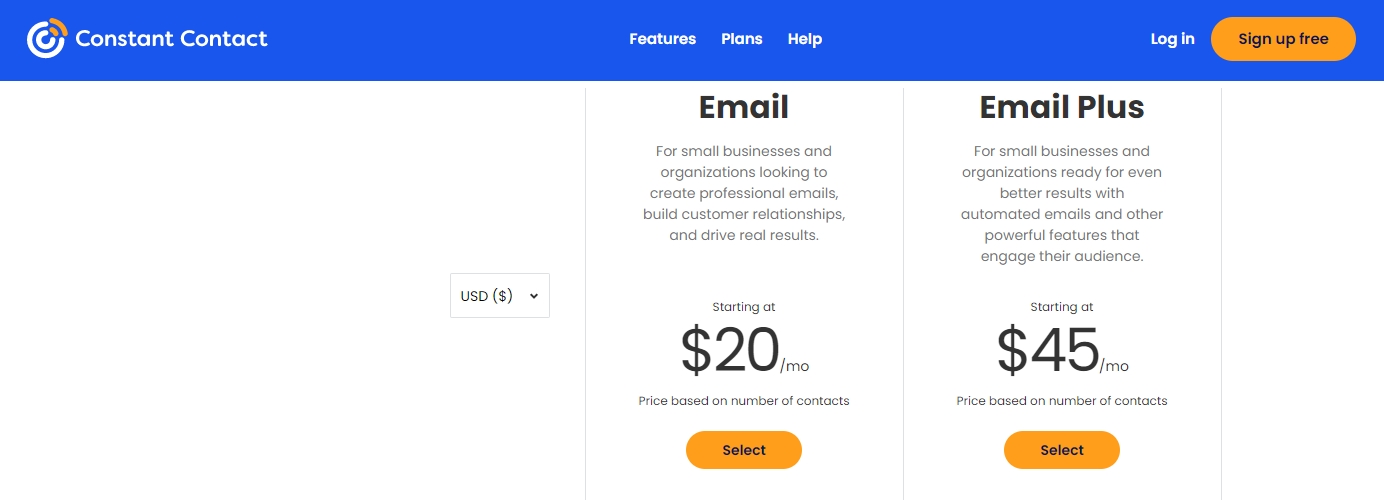
The cheapest plan starts at $20/month with 500 contacts ($0.04/contact).
- Constant Contact offers 60-day free trial without needing a credit card. You’re limited to 100 contacts during the trial period, but it still gives you a safe opportunity to test their service.
2. Sendinblue
Sendinblue’s usability is very intuitive and it hasn’t missed any important features.
You have three methods to add contacts: copy-pasting, import email contacts from a file, and adding contacts individually. All of these are quite intuitive to use. However, during this process, Sendinblue’s data mapping function asks you to match the extra information to an email address, which is optional but isn’t stated clearly during the process.
Sendinblue’s email design tool is where they shine the most. You start by creating a campaign and insert some basic information. The layout of the editor is compact and doesn’t utilize many popup windows to obstruct the view. You have three options for creating your email: drag & drop, “Rich Text Editor”, and custom HTML code. All of these options are smooth and user-friendly. You can also preview your created email with desktop, tablet, and mobile views.
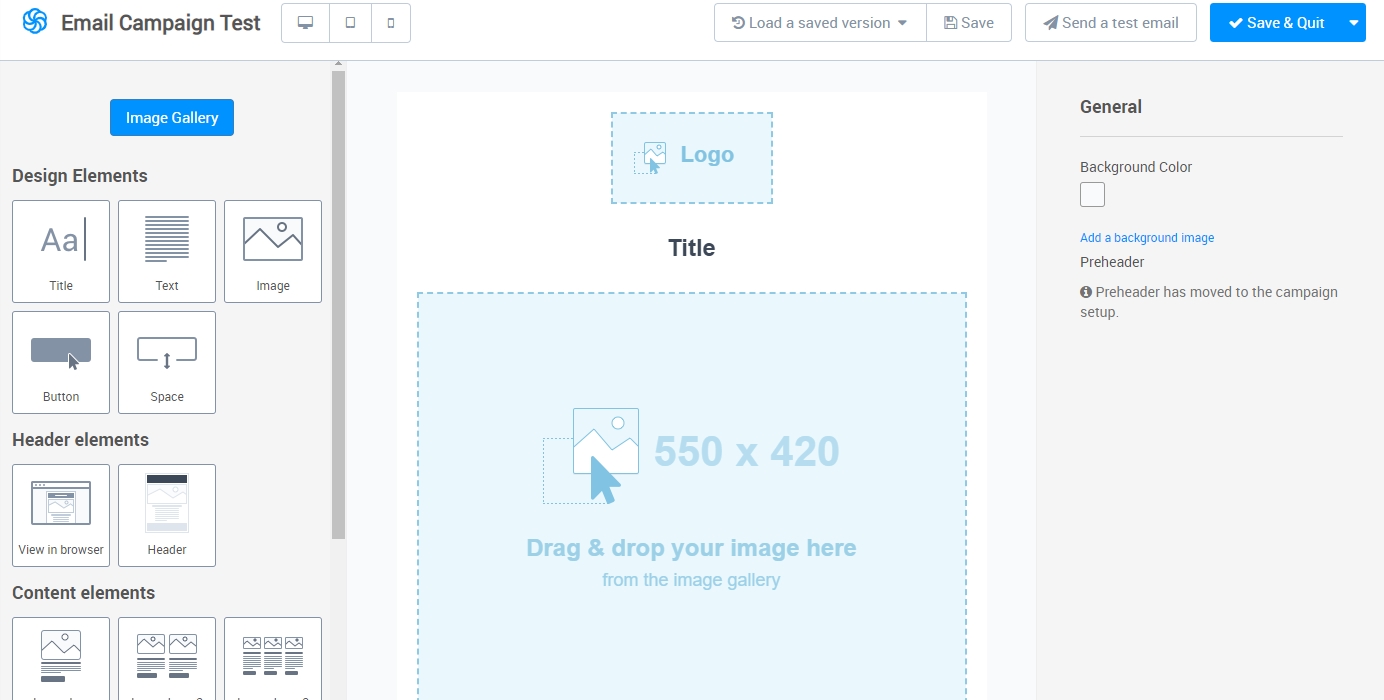
Before you can send your email to your contacts, you go through a summary page that showcases the setup, design, and contact information. This is a great feature to double-check if everything is correct before you hit that Send button.
Mobile Editor
Sendinblue doesn’t have a standalone mobile application. However, their editor is fully functional in the mobile browser.
Features
Sendinblue’s email marketing tools are packing modern features. These features enable you to take advantage of the latest trends in email marketing. Although some of the more advanced features are locked behind higher-tier plans, the free plan’s base features offer enough to get started with your email campaigns.
The main features that we want to emphasize are an unlimited number of contacts and details, intuitive drag & drop based design tool, email personalization, mobile-friendliness, customer segmentation options, and custom email automation rules. You also get a fully-functional CRM for building sales funnels, a live chat plugin, and access to modify Facebook ads directly in Sendinblue’s campaign management tool.
Sendinblue’s customer support is accessible over the email by default. You can also reach them through phone and live chat, but only starting from the Premium plan. They do have an extensive knowledge base with useful articles you can browse for information.
Pricing & Plans
Sendinblue officially offers four different plans: Free, Lite, Premium, and Enterprise. However, there’s another plan named Lite+, which adds some usability for an additional monthly fee. Together with the free plan, all plans have the necessary functionality to design and start an email campaign.
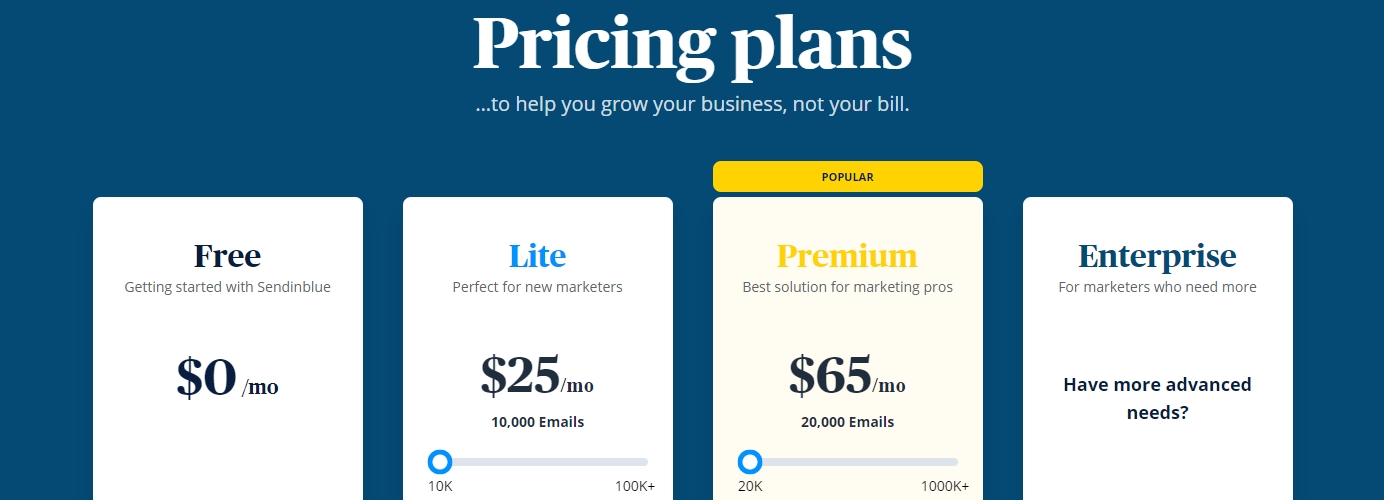
Apart from the free plan, Sendinblue’s cheapest plan starts at $25/month with 10,000 emails ($0.0025/email).
- Sendinblue offers both free and paid plans.
3. GetResponse
The whole process from start to finish feels smooth, is user-friendly, and you have a ton of options along the way. However, the experience would be even better with a built-in image editor.
You can add your contacts easily through the quick-action buttons from the dashboard. You can choose to upload your contacts individually or import them from a file. Depending on your contact list’s size, the importing may take a couple of seconds up to a few hours.
Building your email is relatively straightforward, and you can pick a pre-designed template, start from a blank template, or insert your HTML code in the editor. Working with a template gives you access to drag and drop tools and the building blocks toolbar. We especially enjoyed the block’s name display when hovering over an inserted building block. You can also preview your created emails in the desktop or mobile view making sure the content looks great on all devices.
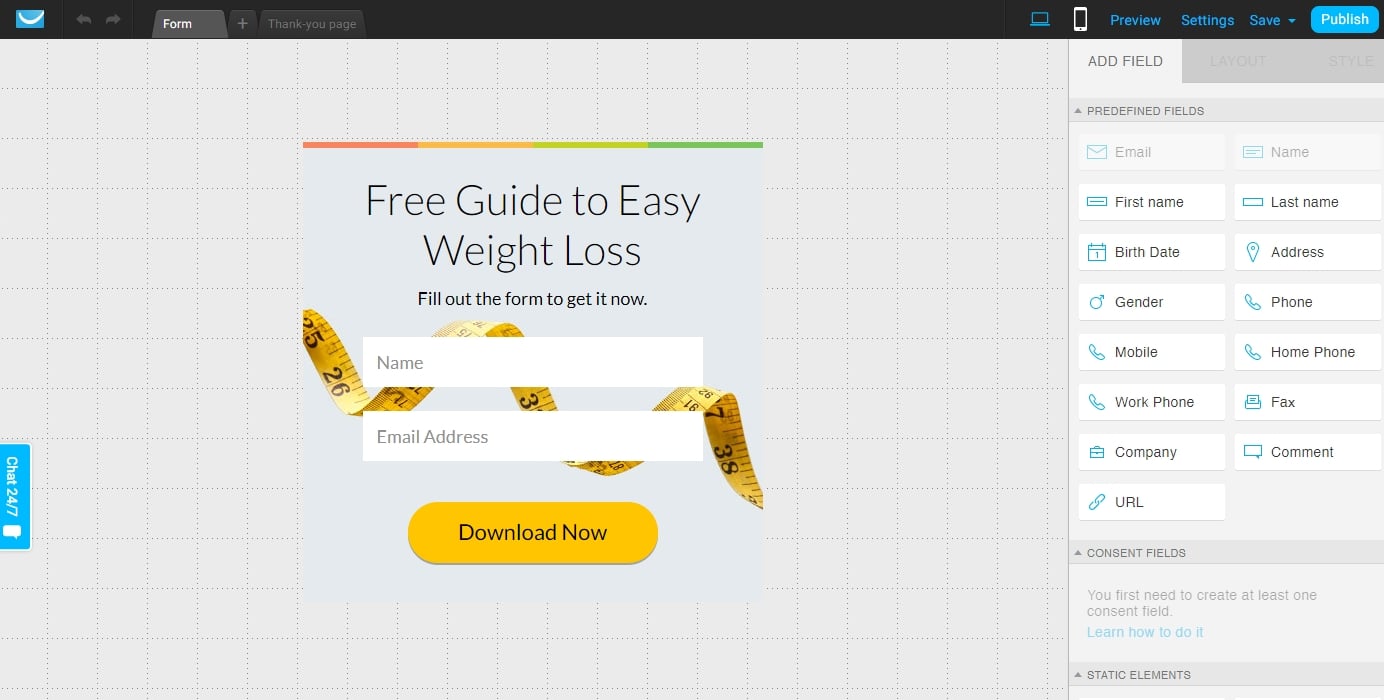
GetResponse also gives you access to thousands of free stock photos and an integrated Shutterstock gallery. However, the latter doesn’t come free, but you can purchase the desired image after previewing it in the editor. Unfortunately, they lack an internal image editor, so when you upload your image, make sure you’ve already edited it.
Once you create your email, you are directed to the summary page. Here you can name your campaign, write the subject line, and add your email recipients. Most of these options open a popup window and don’t redirect you to a different page, except when you want to redo the editing phase.
Mobile Editor
GetResponse has a mobile application that you can use to access data, create emails, and manage your contacts. However, the email editor in the app is disappointing. The customization and personalization options are minimal, and you can only create text-based messages (minus some emotions).
Features
GetResponse focuses heavily on webinars and eCommerce sites. In fact, you get tools for both with even the starter plan. Of course, that doesn’t mean that this service isn’t working with other businesses – quite the opposite.
Since the pricing model is based on the subscriber count, you can send out an unlimited number of emails to your list. The other main features are a drag and drop email design tool, mobile-friendly emails, dynamic content based on customer segmentation, and automated email options for bloggers.
GetResponse’s customer support is available 24/7 over the live chat and email, which is reassuring, especially if you’re new to email marketing. Once you opt for a custom plan, you also get the additional phone support, Slack channel option, and a dedicated support person.
Pricing & Plans
GetResponse’s pricing model is based on the number of contacts you have on your list. You can get the best prices with a 2-year commitment.
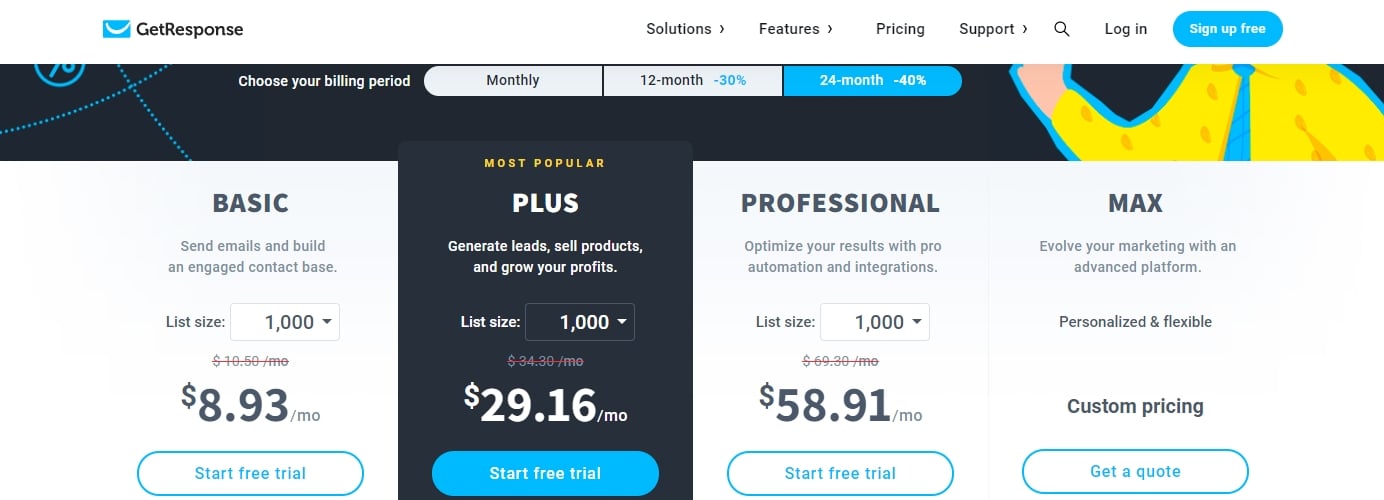
The cheapest plan starts at $10.50/month with 1,000 contacts ($0.0105/contact).
- GetResponse doesn’t have a refund policy with their paid plans, but you can try out their service for 30-days. The trial version doesn’t require your credit card details, either.
4. ConvertKit
ConvertKit’s user experience is very simplistic, maybe even too bare-bones. You miss out on some modern features like a drag and drop editor tool or a more comprehensive selection of templates, but you can get the job done fast.
You can build your email list in three ways: add individual contacts, upload emails in bulk from a CSV file, or import your email contacts from another service. Even though there isn’t an option to copy-paste your data, you can easily create a CSV file to bypass this inconvenience. ConvertKit only supports one list of contacts, and you can organize them by using tags.
Building your email is where things get a bit clunky. ConvertKit doesn’t have a modern drag and drop builder you can use, and the only options are plain text and custom HTML code. There’s also a confusing process for selecting a template, and there are only three options. However, we like that the plain text editor is robust and not cluttered with endless possibilities that can confuse beginners. You can still access several editing options by highlighting a line of text.
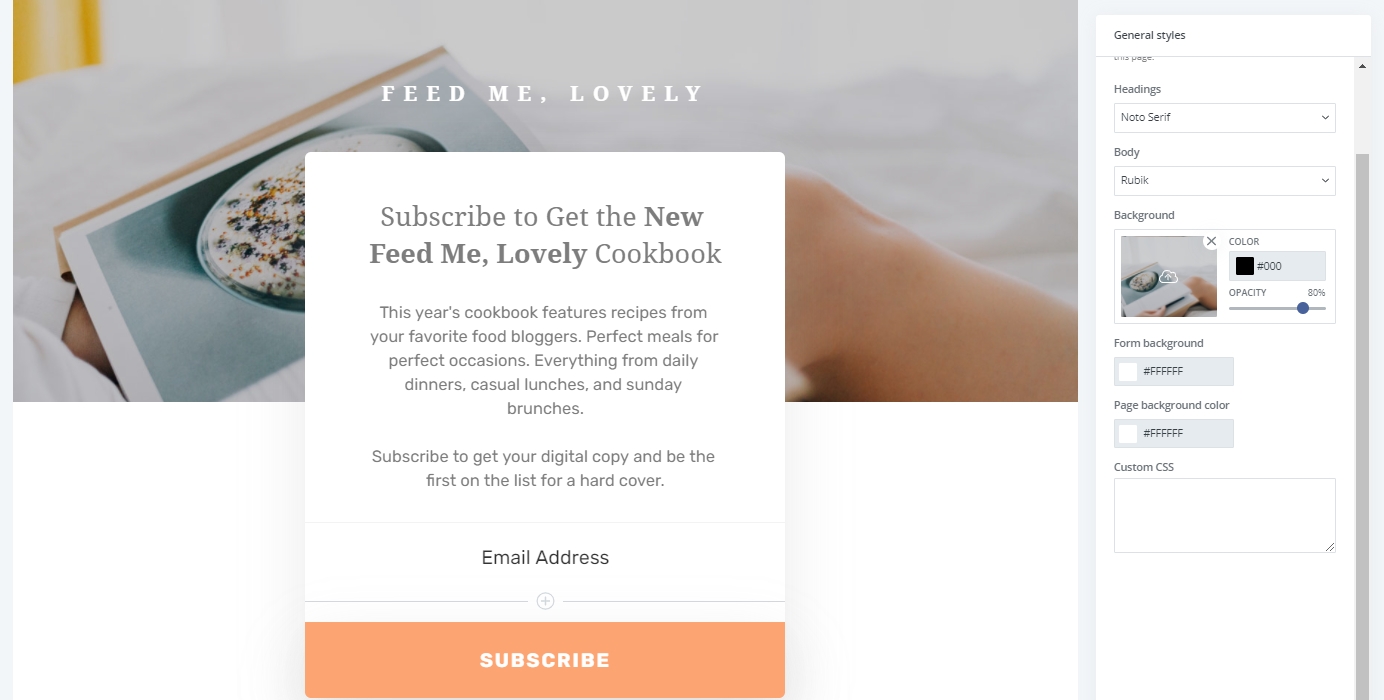
The next step takes you to the preview area, where you can see the full message and double-check if it’s ready to go. You then have the option to send the email immediately or schedule it to a later date.
Mobile Editor
ConvertKit doesn’t have a dedicated mobile application. However, their email editor and dashboard are easy to access from the mobile browser with full functionality.
Features
ConvertKit’s feature list is quite typical for a modern email marketing service. They greatly emphasize supporting your growth and even have a cleverly crafted course for building and launching your email marketing campaigns.
ConvertKit lets you send out an unlimited number of emails to your contacts. The other main features are email automation options, personalized content, sign-up form builder, tag-based customer segmentation, and 70+ integrations with various 3rd party applications.
Their customer support is available over live chat during business hours. However, you can create an email ticket to contact support outside of this time. You get upgraded support features with the paid plans, namely Premium and Priority support. ConvertKit also has a wide array of useful marketing articles and a knowledge base that you can use for further information about the service or email marketing in general.
Pricing & Plans
ConvertKit offers both free and paid plans. The paid plans are subscriber-based, and they also provide you a free migration option if you need to move your data from another email marketing service.
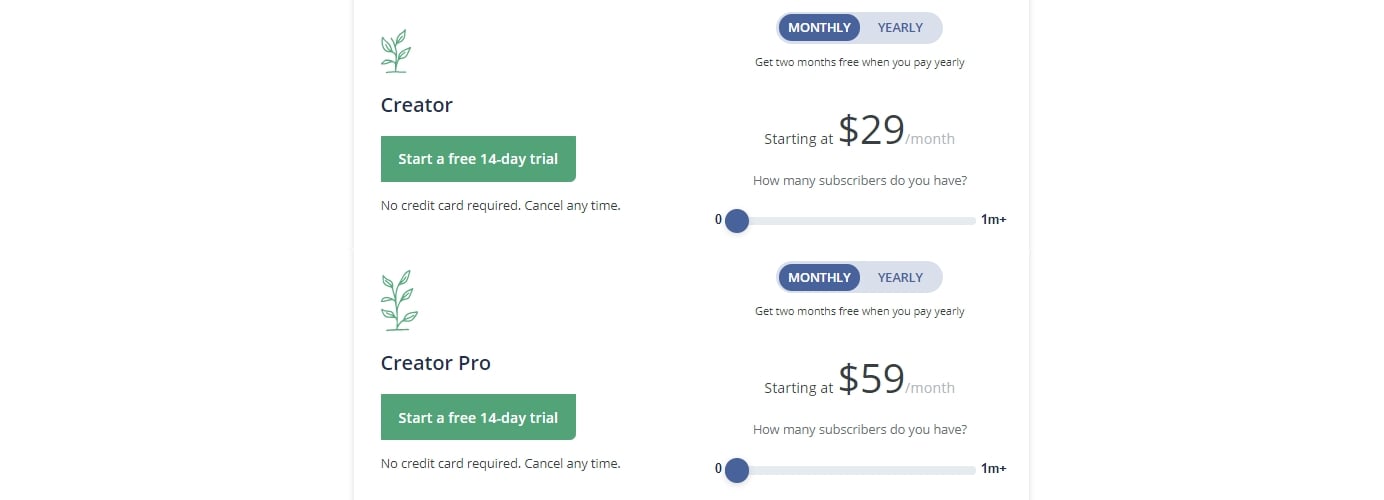
The cheapest paid plan starts at $25/month (annual payment) with 1,000 contacts ($0.025/contact).
- ConvertKit offers a 14-day free trial paid plans up to 35,000 contacts. If you have more than that, you qualify for a personalized demo from the company.
5. Mailchimp
The whole usability of Mailchimp feels very smooth and natural. It’s also a great fit for beginners as you get guidance throughout the process. A major perk is the built-in image editor that adds so much to the overall experience.
After you have your account set up, Mailchimp’s dashboard prompts you to import email contacts either from a file or by copy-pasting it. You then organize your contacts’ statuses, add tags, insert additional information, and review the outcome. When you need to add or remove information or contacts, you can easily do that from the Audience Dashboard.
Before you can start building your email, you need to set up a campaign. Again, the entire process is so smooth and guided all the way.
You can build your email in plain text, custom HTML code, or choose a template or pre-built layouts. The latter opens up the Mailchimp’s drag and drop design tool. The structure is quite solid; however, we found that accessing a block’s additional options covers the entire toolbar, which is a bit annoying. One of the best features of Mailchimp’s email builder is the integrated image editor. You can build your full email without ever leaving the site.
During the email building phase, you can always preview the message in desktop, mobile, or inbox view. However, the latter didn’t seem to work for us when we reviewed this tool.
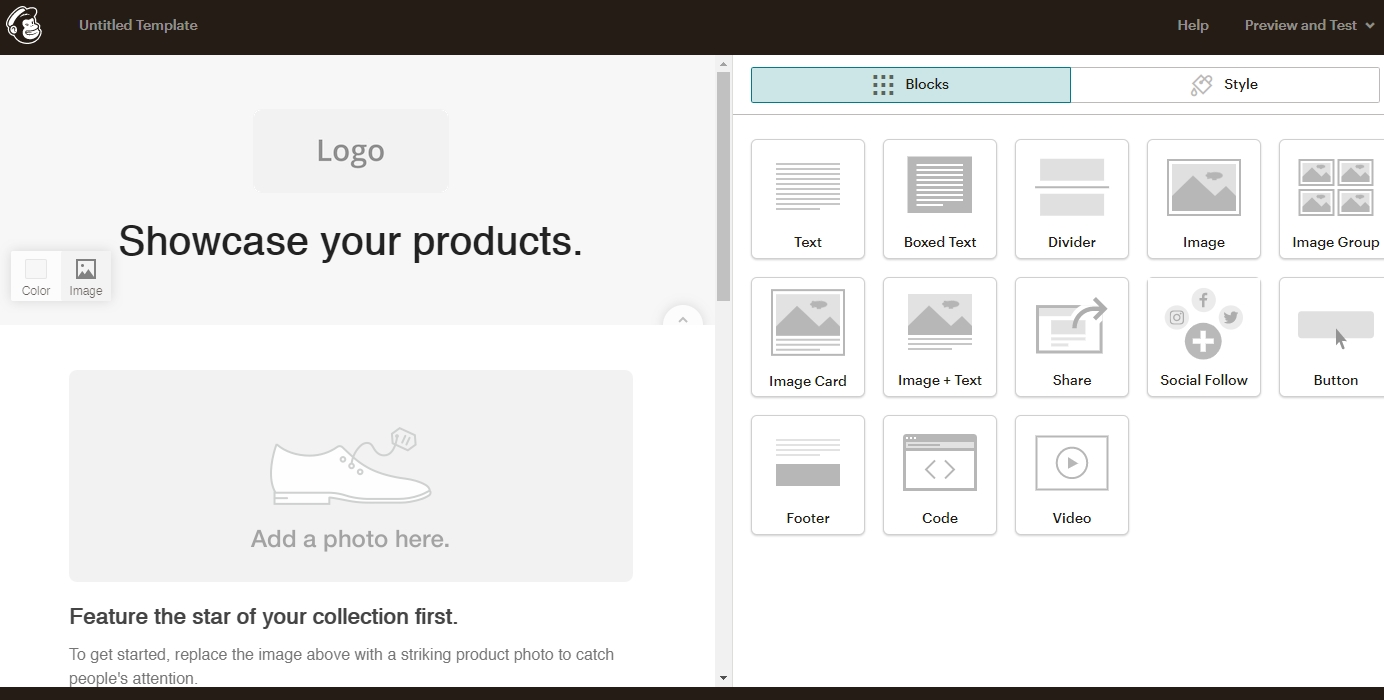
Once you’re done, you are directed to the summary page to double-check everything, and then you can send your campaign out. Since you’ve already created an email list and added details of your campaign, there are no extra steps at this point.
Mobile Editor
Mailchimp has a dedicated mobile application. You can access performance data, add email contacts, and create landing pages and emails. The mobile email editor itself is fully-functional and looks great. We especially like that the main screen is focused on the email itself and isn’t cluttered with editing options.
Features
Mailchimp has all the modern features that are necessary for running a successful email campaign.
The main features of Mailchimp’s email marketing tools are the drag and drop design tools, customer segmentation options, dynamic content, email automation, sign-up forms, and 200+ integrations with social media and other applications.
Mailchimp’s 24/7 email and live chat support is available with the paid plans, and you get additional phone support with the highest-tier plan. However, when signing up with either the free plan or any paid plans, you get a 30-days email support perk. They also have a substantial knowledge base with useful articles and guides.
Pricing & Plans
Mailchimp’s pricing is based on the number of contacts you are planning to have. Apart from the monthly subscription plans, they also offer a flexible payment option called Pay As You Go. This plan gives you the Essential plan’s features, but you only pre-pay for Mailchimp Credits, which you can then use to send your messages.
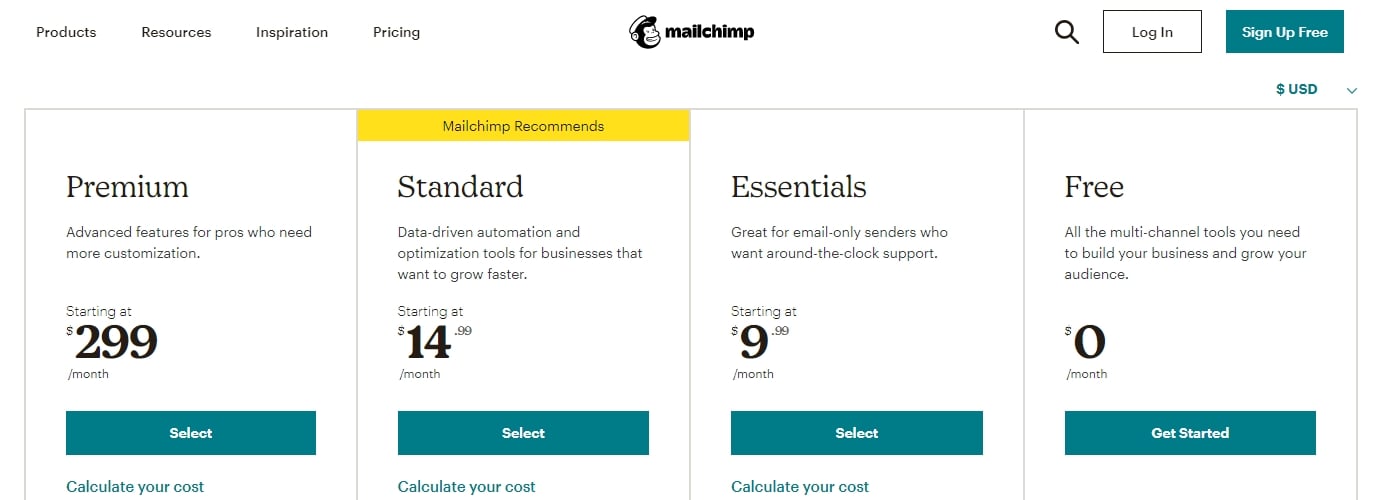
The cheapest paid plan starts at $9.99/month with 500 contacts ($0.01998/contact)
- Mailchimp doesn’t offer a free trial for any of their paid plans. There also isn’t any money-back guarantee.
6. AWeber
The user experience could be better when looking at building your emails or adding and removing contacts from a list. However, once you get used to the layout, it becomes easier to navigate.
You have three options for adding contacts to your list: adding them one at a time, copy-pasting multiple contacts at once, and importing contacts from a file. The last two options trigger a five-step process. There you add more data about your contacts, opt for sending a confirmation email to your subscribers, add tags, and confirm the origin of your contacts. The process feels a bit clunky but doesn’t take long to go through.
We didn’t find a convenient way of adding or removing contacts from a list, which was a significant drawback. We managed to do it by exporting the list, making changes, and importing it again to a different list, but that took a lot of effort.
You can create your email using the built-in drag and drop email builder, plain text, or custom HTML code. When using the builder, you can access pre-made templates from the editor, so don’t get disheartened by the blank slate. Choosing a template only adds the empty blocks and structure of your chosen template, which isn’t very obvious.
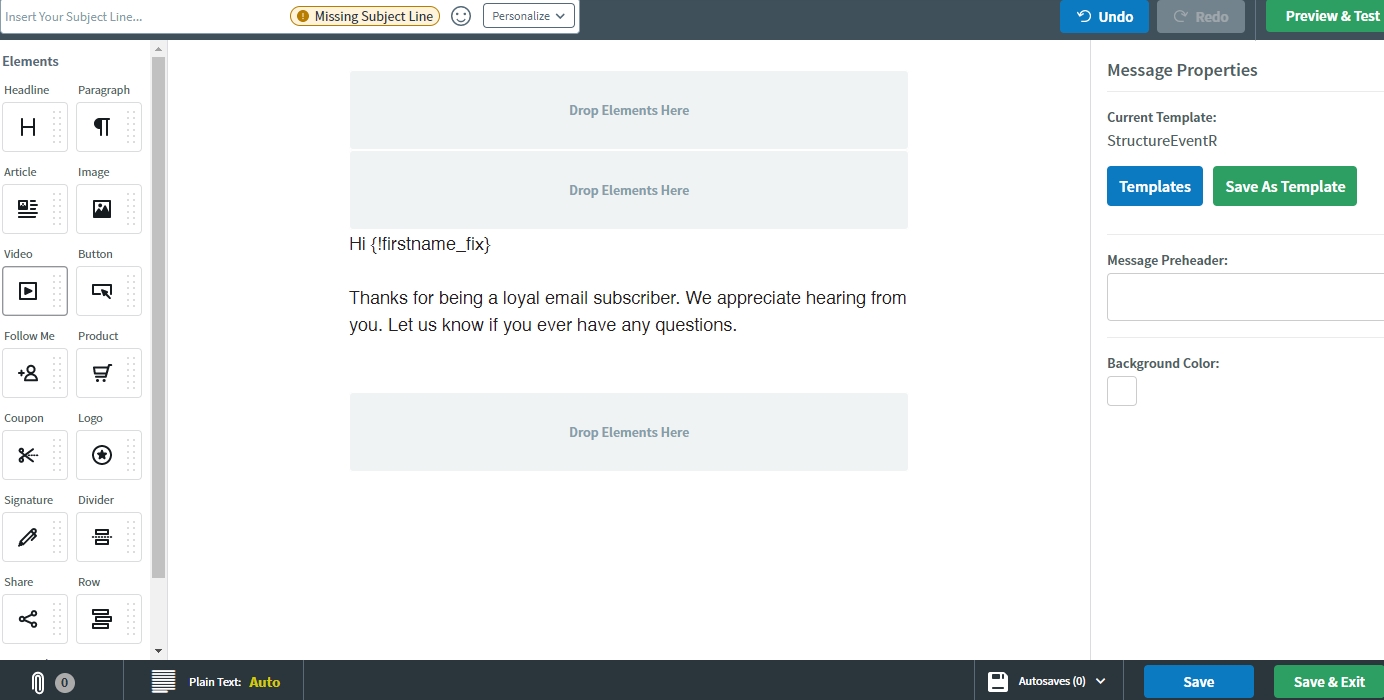
There’s also no next step for sending the email right after you’ve created the email. Instead, you have to save and exit from the editor and navigate to scheduling your message. From a new user’s perspective, we feel that this process isn’t very smooth and straightforward, as some of the other easier ones we’ve seen.
Sending your email to your contact list is an easy process and takes just a few minutes. You pick the email you want to schedule, choose the pre-built email list, and select when you want your campaign to go out.
Mobile Editor
AWeber has two mobile applications: AWeber Stats and AWeber Atom. Unfortunately, you’re unable to create or edit emails with them. You can view your campaign’s ongoing statistics with the AWeber Stats app, and you can add subscribers to your list from the AWeber Atom app.
However, AWeber’s email editor is fully-functional in the mobile browser.
Features
The unique aspect of AWeber is its AI-powered email template designer. If you’re a beginner, this makes the whole process of creating your email a lot easier.
The other main features are the drag and drop email builder tool, email automation options, personalized emails, tag-based contact targeting, sign-up forms, and a free image library. On top of that, you can also create video-based landing pages.
AWeber offers a fantastic 24/7 customer support over the phone, email, or live chat. They also have an extensive knowledge base where you can find answers to typical questions that might arise.
Pricing & Plans
AWeber offers a free and a paid plan. The paid option is based on the subscriber count, and you can choose to pay monthly, quarterly, or annually. Opting for the latter offers you the lowest prices.
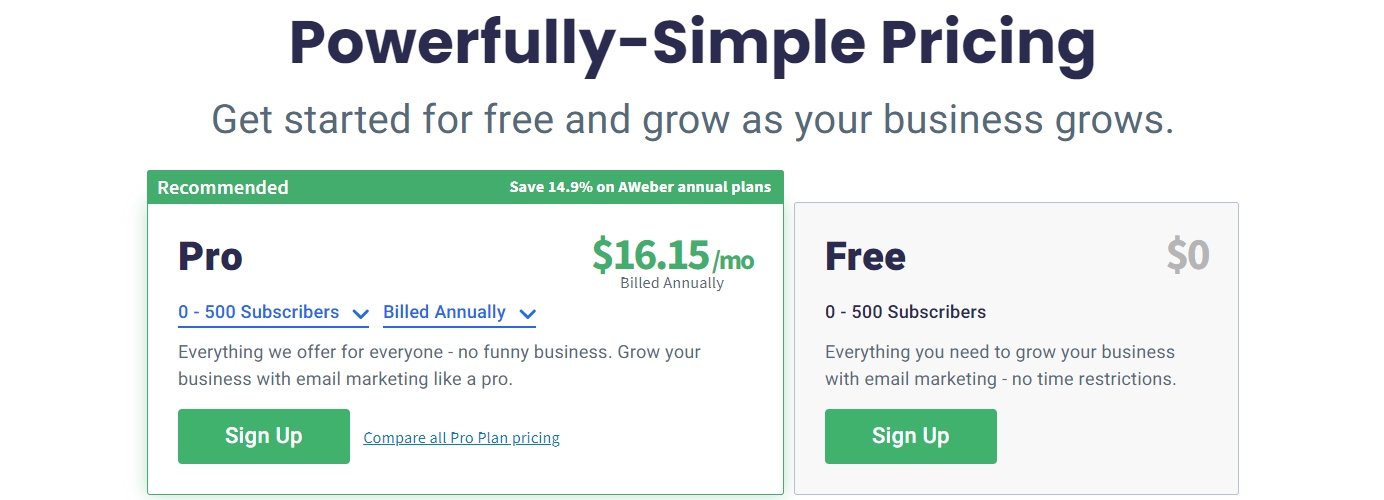
Apart from the free plan, AWeber’s plans start at $16.15/month with 500 contacts ($0.0323/contact)
- AWeber also offers a 30-day money-back guarantee with no questions asked.
7. Drip
Drip’s user experience was quite good, but there’s a slight learning curve to the whole interaction. It’s clear that Drip wants to be different from your regular email marketing platforms, and that’s not a bad thing. Design-wise, the dashboard, the editor, and the navigation look so uniform.
You can add contacts in three standard ways: individually, importing emails in bulk from a file, copy-pasting. There’s also a tag system so you can categorize your email list. Once you start picking your audience, the existing tags and segment system gets clunky for new users. However, once you use it a couple of times, it makes email targeting simpler.
Now, to build an email, you need to either create a campaign or a broadcast. Both of these have different options and fields you need to fill out with information before proceeding. You can then build your email using plain text, custom HTML code, or the built-in email builder.
When choosing the builder, you start by selecting a pre-made template or starting from scratch. You can also pre-create custom templates that you can then select. The email design tool itself is quite robust. You have your familiar drag and drop blocks, but at first glance, it all looks a bit bare. However, there are some additional options when you choose a block that you want to insert into your email. At any time, you can preview your email on a desktop, tablet, or mobile view.
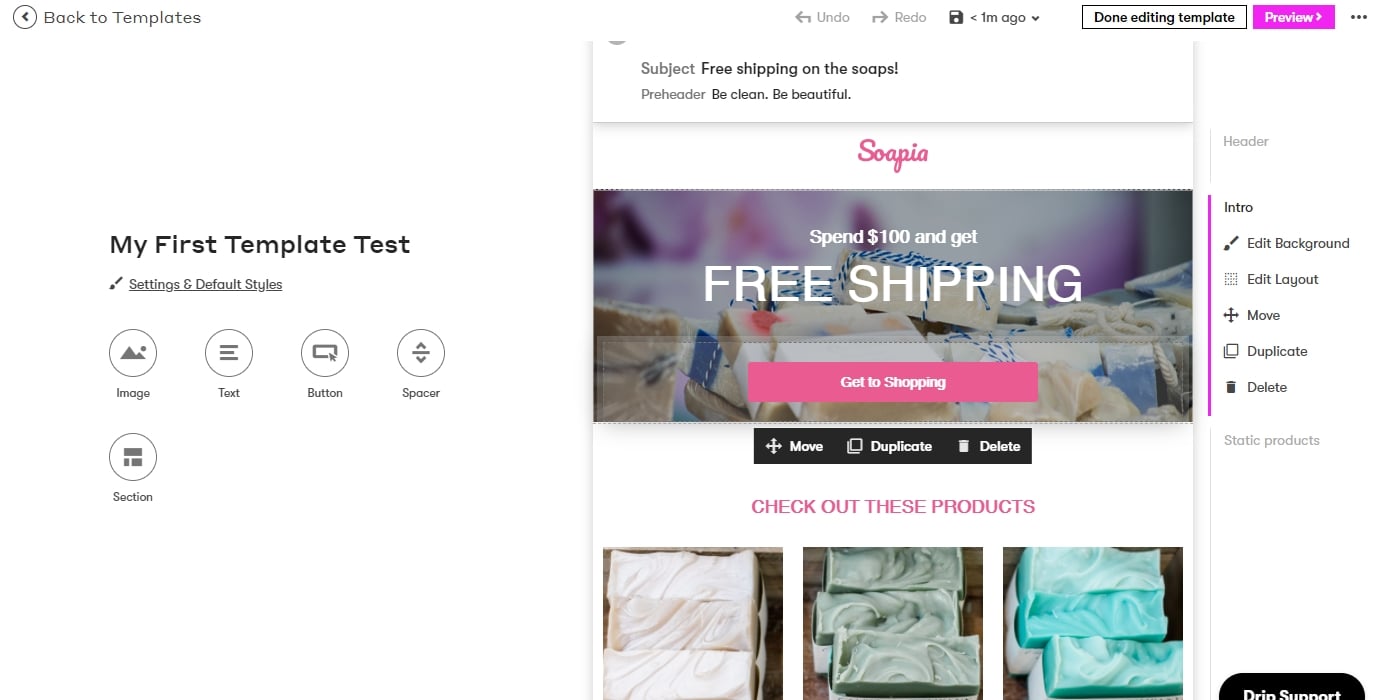
After you create your email, you can opt for adding subject line and content variations to make a split test. Then you can choose to send your email out immediately or schedule it for a later date. There aren’t many steps here as you already inserted all of the required information before.
Mobile Editor
Drip doesn’t have a separate mobile application. Still, their dashboard and email editor is accessible through a mobile browser. All the necessary functionality for creating an email is there, but the whole interaction with the editor feels off and slow.
Features
Drip doesn’t offer different tier plans. This means that the features you get are the same across the board.
You can send an unlimited number of emails with Drip. Their other main features are drag and drop tools, customer segmentation options, contact tags, personalized content in emails, opt-in forms, and 100+ social media and 3rd party tool integrations. They also have a nifty visual builder for the customer funnel flow, which you can also split test to determine the best one.
Drip offers 24/7 email support with their plan. However, you get an additional live chat support option when you exceed 5,000 contacts.
Pricing & Plans
One of the most substantial perks of Drip is that they don’t have any plan tiers. Instead, they keep it simple and only charge you based on the number of contacts you have.
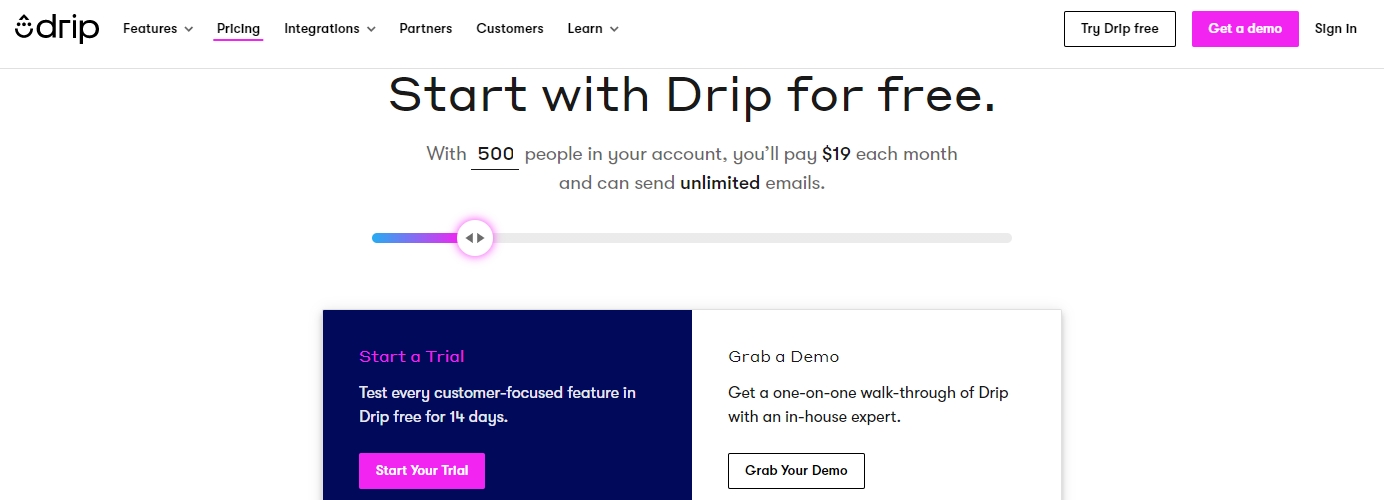
Drip’s cheapest plan starts at $19/month with 500 contacts ($0.038/contact).
- Drip offers a 14-day free trial with no credit card required so that you can test out their service. Since they don’t lock features behind layers of different plans, you get to test the entire feature base.
8. ActiveCampaign
The entire flow is very straightforward and easy to grasp. ActiveCampaign has a couple of unique aspects that we didn’t find with other service providers, namely the personal consultation call and the spam analyzing tool.
Adding your contacts to an email list is a standard process with options to insert them individually, importing email contacts in bulk from a file, or copy-pasting. If you have a list with another email marketing service, you can connect it, and your contacts get transferred automatically. You can organize the contacts by adding tags to each of them.
Before you can start creating your email, you have to build a campaign. There are several specific options for the type of campaign: standard campaign, automation, RSS triggered, date-based, and A/B testing. The next step is adding a list to your campaign; however, you can’t add contacts individually or include all of your available subscribers.
You can create your email from scratch using the editor tool, choose a template, or insert custom HTML code. You can choose from 21 available templates and a bunch of layout options. The design tool itself is based on a drag and drop functionality with pre-defined elements that you can add to your email. There are also some additional design options for each component. ActiveCampaign also features an image editing tool in the email editor, which is a time saver.
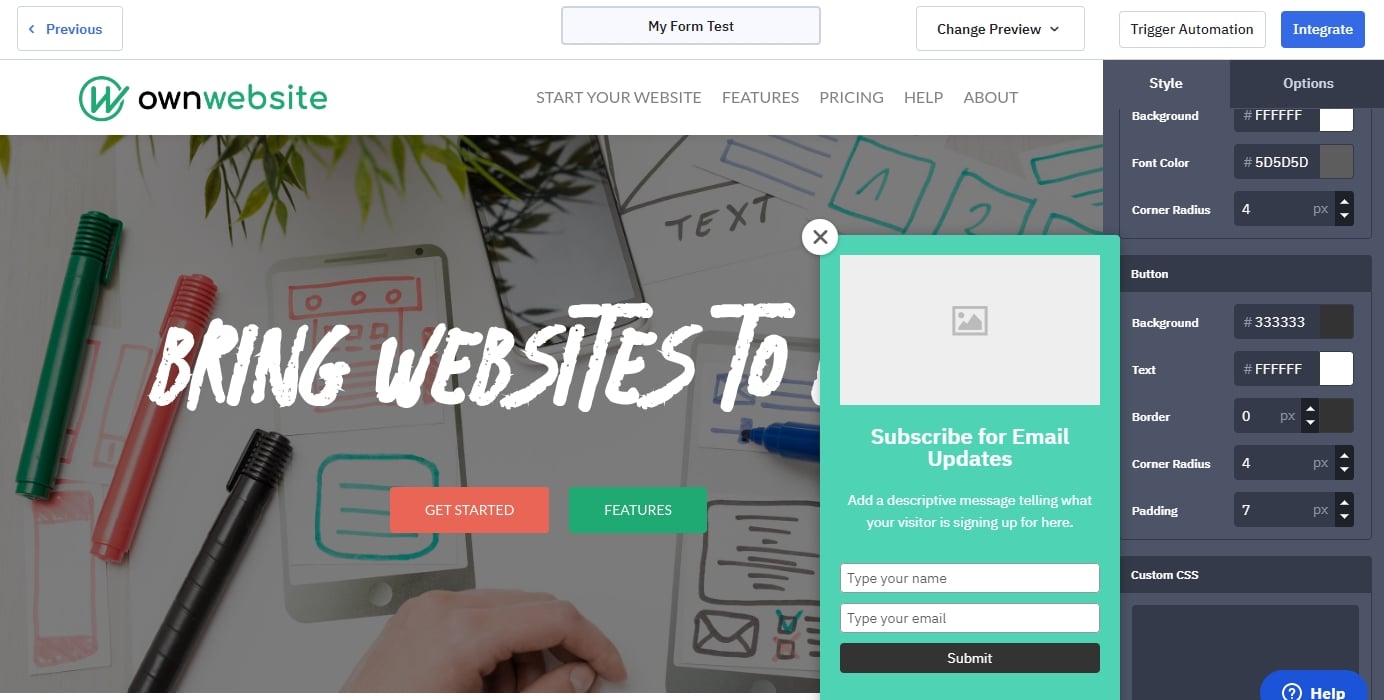
Once you’re done with your email, you get to the summary page. Here you can turn on different tracking features, add a date for scheduling your email, and run a Spam Check. The latter shows you how likely your message is considered spam by the email software – something unique we haven’t encountered with other service providers. You can now send the message immediately, schedule it, or simply save and exit the editor.
Mobile Editor
ActiveCampaign has a separate mobile app where you can check your reports, track customer activity, and access your CRM. Unfortunately, there isn’t an editor featured there, so the app acts more as an information tool.
You can use the email editor in a mobile browser with all the editing features as another option.
Features
ActiveCampaign’s features are similar to what you’ve already come to expect from a modern email marketing service. However, they add a machine learning aspect for sending emails and creating somewhat unique content.
There’s no limit to the number of emails you can send with any of their plans. The other main features are drag and drop design tools, email and marketing automation tools, dynamic content options, opt-in forms, and social media integrations.
ActiveCampaign offers chat and email support during business hours. The additional phone support option becomes available with a higher-tier plan.
Pricing & Plans
ActiveCampaign’s plan progression is somewhat peculiar. As you increase the number of contacts, the higher-tier plans become unavailable. So, the more subscribers you have, the fewer features you have with your email marketing. You can pay for the service with monthly or annual payments, where the yearly costs much cheaper across the board. They also throw in a free data migration option from other email marketing services.
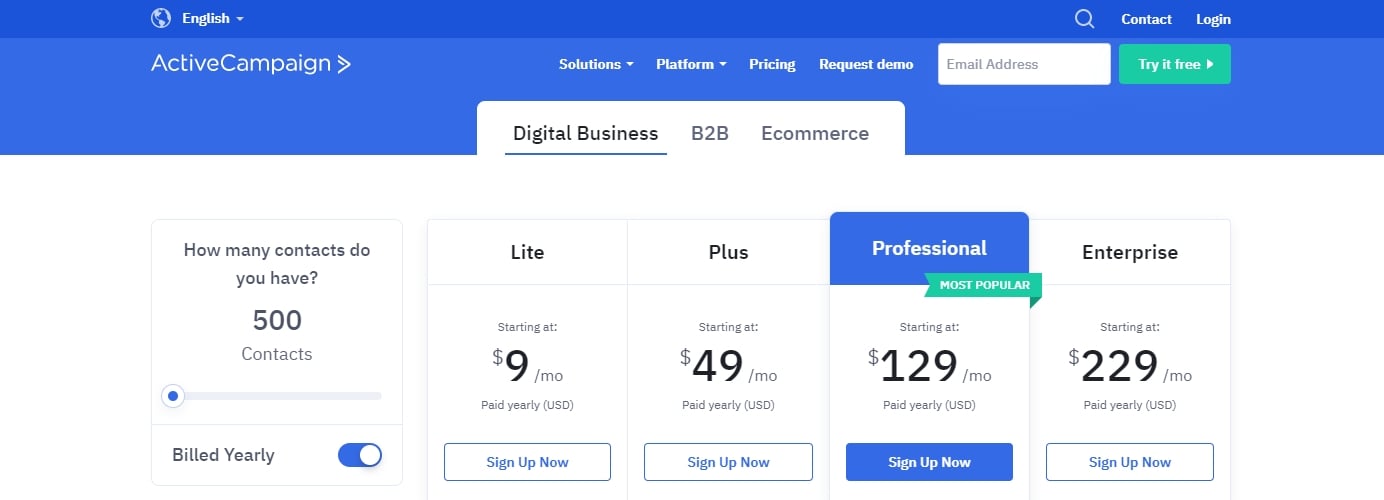
Their cheapest plan starts at $9/month with 500 contacts ($0.018/contact).
- ActiveCampaign offers a 14-day free trial with some limited features. Unfortunately, they don’t offer a money-back guarantee.
9. MailerLite
The entire flow felt very similar to the other best providers, with some exceptions in design and interaction. The seamless animations of the MailerLite tools and the building blocks’ additional visual content provide an excellent experience for a new user.
Standard choices for adding contacts with MailerLite are individual, upload a list from a file, or copy-pasting. You can also import your email contacts from Mailchimp, which is an odd option on its own. After the import, you can either add them to an existing group or create a new one in the same flow.
To start creating your email, you first need to set up a campaign with some additional information about it. You have multiple options to build your email: drag and drop editor, plain text, and custom HTML code. Furthermore, you can also use the MailerLite’s Legacy rich-text editor”, which is almost like a combination between the plain text and block-based editor, minus the overall smoothness of a drag and drop tool.
You can also choose a template among 62 options. There’s a preview option available for the templates and during the email creation process. A word of caution, once you choose a template for the campaign, you can’t change it unless you create a new campaign from scratch.
The design tool itself is based on drag and drop functionality. We also like that you can instantly understand the nature of different blocks because they have example content in them. It’s especially useful for beginners who don’t have much knowledge about email design and structure. However, there’s also a downside with the editor – you’re unable to edit a text block inside the email. Instead, a toolbar slides out where you can insert your content, which is a bit unfamiliar in design.
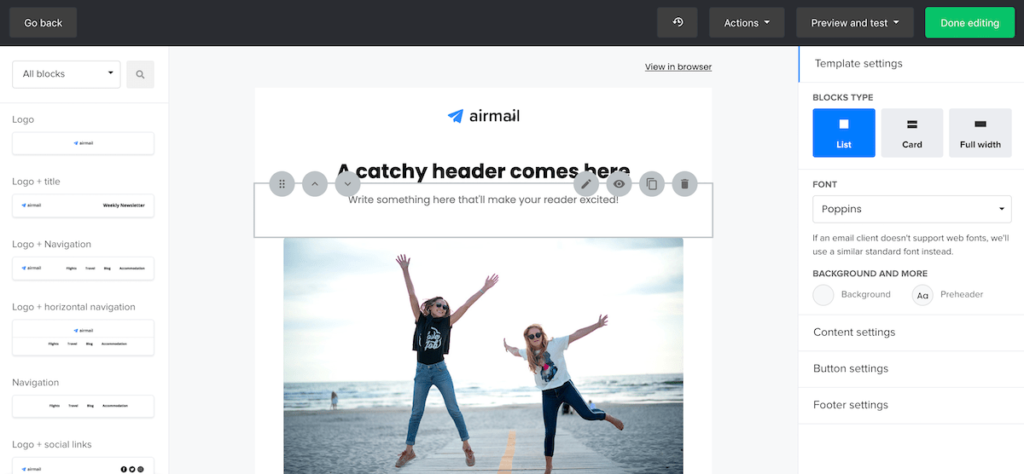
Once you’ve created your email, you can choose the recipients; either a specific group or all available contacts. Next, you can review the email and all the options you’ve made on the summary page, and make final changes if needed. You can now send your campaign out immediately or schedule it for a later date.
Mobile Editor
MailerLite has a separate app only available on iPhones. You can see your campaign’s results, email previews, schedule messages, and manage your subscriber list. The app is missing the email editing functionality.
Luckily, the editor is accessible and fully-functional in the mobile browser. You might need to turn your device horizontal to see and edit the content column. However, it’s still quite cluttered and isn’t pretty.
Features
MailerLite’s feature set is quite common in the email marketing industry, but they don’t have different tiers for their paid plans. Still, there are differences between the free and paid plans’ features. Interestingly, you can’t add your custom HTML code in the free version.
The main features are drag and drop editing tools, customer segmentation options for targeted emails, contact tags, email automation, sign-up forms, and dynamic content. They also have 110+ integration options with various applications and social media accounts.
MailerLite offers 24/7 customer support over email and a live chat. The latter is only with Premium plans though. They also have a decent knowledge base where you can find answers and further knowledge about email marketing.
Pricing & Plans
MailerLite offers a free and a paid plan. A great thing about the paid plan is that there are no tiers. Once you opt for a paid plan, all the features remain the same no matter how many contacts you have. You can choose to pay a monthly or an annual fee. The latter costs 30% less if pre-paid up to 100,000 contacts. You also get a free website with five landing pages upon signing up.
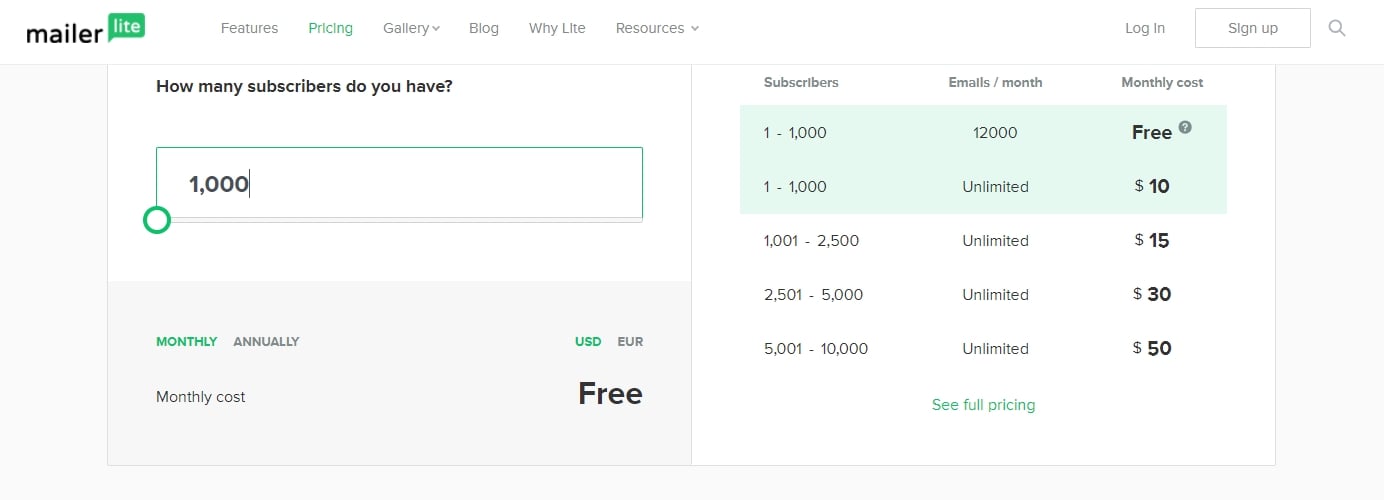
The cheapest paid plan starts at $7/month (annual payment) with 1,000 contacts ($0.01/contact). The price is $10/month if you choose to pay monthly.
- MailerLite offers a 14-day free trial with premium features, and then you can decide if you stay on the free plan or choose to buy the paid version. Remaining on the former loses the premium perks from your account.








0 Comments